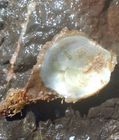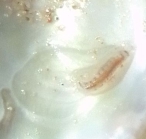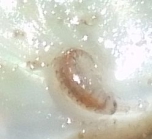
| About | | Search taxa | | Taxon tree | | Search literature | | Checklist | | Stats | | Log in |
WoRMS taxon detailsPolynoidae Kinberg, 1856
939 (urn:lsid:marinespecies.org:taxname:939)
accepted
Family
marine,
recent only
Kinberg, J.G.H. (1856). Nya slägten och arter af Annelider, Öfversigt af Kongl. Vetenskaps-Akademiens Förhhandlingar Stockholm, 12 (9-10), 381-388 [read 1855; printed 1856]., available online at https://www.biodiversitylibrary.org/page/15970133
page(s): 383 [as family Polynoina] [details]
Read, G.; Fauchald, K. (Ed.) (2025). World Polychaeta Database. Polynoidae Kinberg, 1856. Accessed through: World Register of Marine Species at: https://www.marinespecies.org/aphia.php?p=taxdetails&id=939 on 2025-07-15
Date action by 2004-12-21 15:54:05Z created db_admin
Nomenclatureoriginal description
Kinberg, J.G.H. (1856). Nya slägten och arter af Annelider, Öfversigt af Kongl. Vetenskaps-Akademiens Förhhandlingar Stockholm, 12 (9-10), 381-388 [read 1855; printed 1856]., available online at https://www.biodiversitylibrary.org/page/15970133 page(s): 383 [as family Polynoina] [details] Identification resourceidentification resource
Barnich, Ruth. (2011). Identification of scale worms in British and Irish waters. NMBAQC 2010 taxonomic workshop, Dove Marine Laboratory. 52 pp., available online at http://www.nmbaqcs.org/scheme-components/invertebrates/literature-and-taxonomic-keys/identification-of-scale-worms.aspx [details] identification resource Chambers, S.J. & Muir, A.I. (1997). Polychaetes: British Chrysopetaloidea, Pisionoidea and Aphroditoidea. <em>Synopses of the British Fauna (New Series).</em> 54: 1-202. (look up in IMIS) page(s): 67 [details] identification resource Pettibone, Marian H. 1969. Review of some species referred to Scalisetosus McIntosh (Polychaeta, Polynoidae). Proceedings of the Biological Society of Washington, 82: 1-30., available online at http://hdl.handle.net/10088/3412 [details] identification resource Barnich, R.; Gambi, M. C.; Fiege, D. (2012). Revision of the genus <em>Polyeunoa</em> McIntosh, 1885 (Polychaeta, Polynoidae). <i>Zootaxa</i>. 3523: 25-38., available online at http://www.mapress.com/zootaxa/list/2012/3523.html [details] Available for editors Othercontext source (Hexacorallia)
Fautin, Daphne G. (2013). Hexacorallians of the World. (look up in IMIS) [details]
additional source Barnich, Ruth; Fiege, Dieter. (2003). The Aphroditoidea (Annelida: Polychaeta) of the Mediterranean Sea. <em>Abhandlungen der Senckenbergischen Naturforschenden Gesellschaft.</em> 559: 1-167., available online at http://www.schweizerbart.de/publications/detail/isbn/9783510613533/The-Aphroditoidea-Annelida-Polychaeta-of-the-Mediterranean-Sea [details] Available for editors additional source Malmgren, A.J. (1867). Annulata Polychaeta Spetsbergiæ, Grœnlandiæ, Islandiæ et Scandinaviæ. Hactenus Cognita. Ex Officina Frenckelliana, Helsingforslæ. 127 pp. & XIV plates., available online at http://www.biodiversitylibrary.org/bibliography/13358 page(s): 4 [details] additional source Fauchald, K. (1977). The polychaete worms, definitions and keys to the orders, families and genera. <em>Natural History Museum of Los Angeles County: Los Angeles, CA (USA), Science Series.</em> 28:1-188., available online at http://www.vliz.be/imisdocs/publications/123110.pdf [details] additional source Wehe, Thomas. (2006). Revision of the scale worms (Polychaeta:Aphroditoidea) occurring in the seas surrounding the Arabian Peninsula. Part I: Polynoidae. <i>Fauna of Arabia</i>. 22: 23–197. [details] Available for editors  Present Present  Inaccurate Inaccurate  Introduced: alien Introduced: alien  Containing type locality Containing type locality
From editor or global species database
Authority Malmgren (1867:4) may have been the first to use the "Polynoidae" spelling, but he cites Kinberg's (1856) family "Polynoina" which seems sufficient indication to credit Kinberg with the authorship of the family. [details]Classification Remarkable for the number of small subfamilies which have been erected. The total is twenty one, or twenty two including the nominal subfamily (Polynoinae), and Hanley (1989) lists 17 to that date. As an example Pettibone (1985) had established subfamily Branchinotogluminae for a single new genus Branchinotogluma with three new species, and earlier (1976) she had created five new subfamilies (Macellicephaloidinae, Macelloidinae, Bathyedithinae, Polaruschakovinae, Bathymacellinae). She has created 12 subfamilies in Polynoidae. The latest subfamily is Uncopolynoinae Wehe, 2006, for one genus, with one species imperfectly known. The validity of all these subfamilies needs re-evaluation. Polynoidae sub-families in chronological order (updated from Hanley, 1989) Polynoinae Kinberg, 1856 [nominal] Iphioninae Baird 1865 Lepidonotinae Willey 1902 Harmothoinae Willey 1902 [= Polynoinae Kinberg] Macellicephalinae Hartmann-Schroder 1971 Bathyedithinae Pettibone 1976 Polaruschakovinae Pettibone 1976 Macelloidinae Pettibone 1976 Macellicephaloidinae Pettibone 1976 Bathymacellinae Pettibone 1976 Admetellinae Uschakov 1977 Polyodontinae Muir 1982 [= family Acoetidae] Gesiellinae Muir 1982 Lepidonotopodinae Pettibone 1983 Branchipolynoinae Pettibone 1984 Branchiplicatinae Pettibone 1985a Branchinotogluminae Pettibone 1985b Lepidastheniinae Pettibone 1989 Acholoinae Pettibone, 1996 [= Polynoinae Kinberg] Eulagiscinae Pettibone, 1997 Vampiropolynoinae Marcus & Hourdez, 2002 Uncopolynoinae Wehe, 2006 [details]
|





